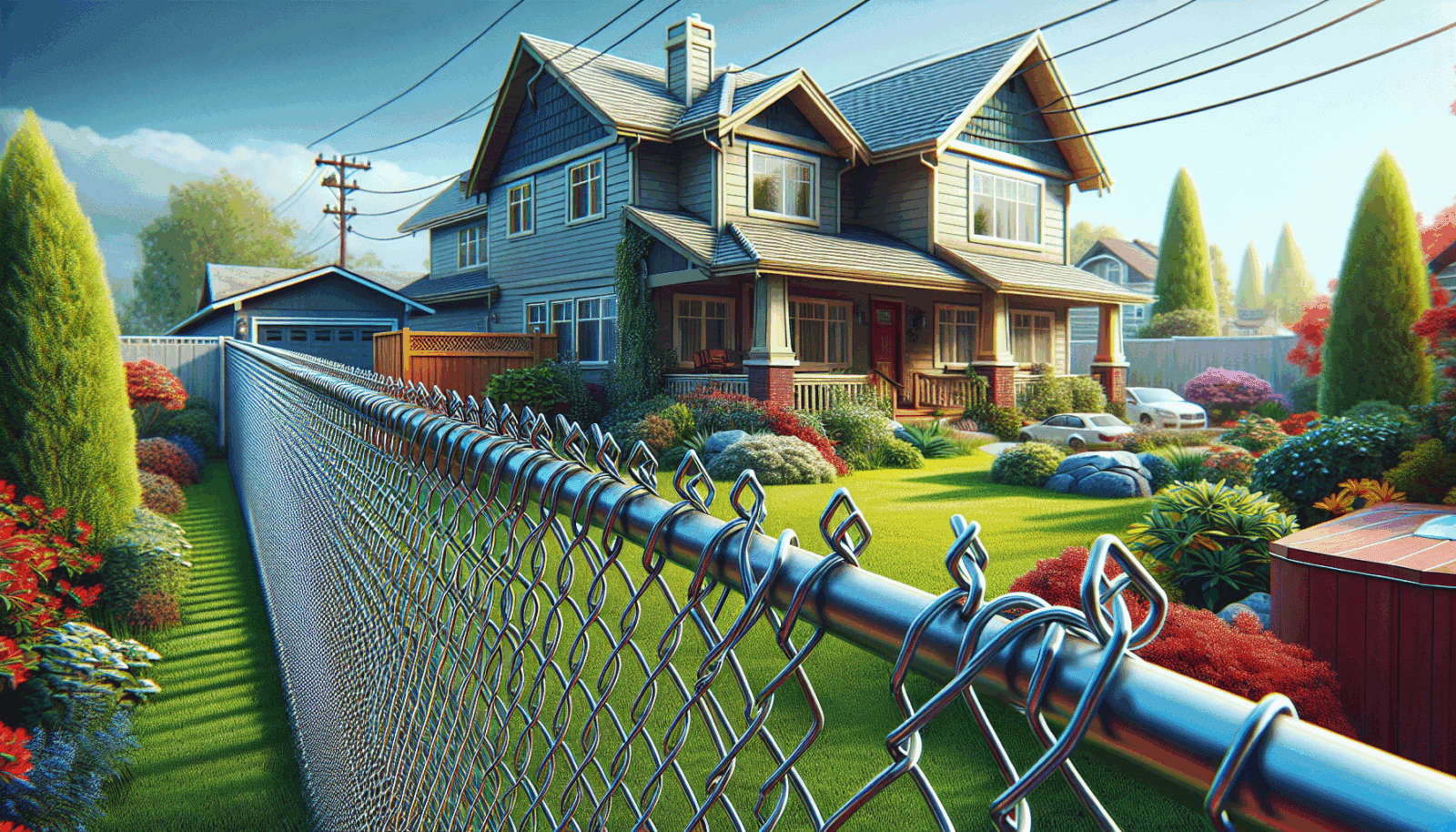Contents
- 1 Understanding Chain Link Fence Components
- 2 Regular Inspection Routines
- 3 Addressing Rust Issues
- 4 Fixing Loose Posts and Rails
- 5 Replacing Damaged Fence Fabric
- 6 Maintaining Tension
- 7 Dealing with Sagging Sections
- 8 Preventative Measures for Long-Term Durability
- 9 When to Call the Professionals
- 10 Conclusion
Understanding Chain Link Fence Components
Before diving into repairs, it’s crucial to understand the components of your chain link fence. The structure primarily consists of the fabric (or mesh), posts, rails, and fittings. The fabric is the visible, woven part, while the posts are the vertical components driven into the ground that support the fabric. Rails run horizontally along the top and sometimes bottom of the fence, lending additional support. Lastly, fittings are the pieces that connect the fabric to the posts and rails. Recognizing these parts will make diagnosing issues much simpler.
Training yourself to visually inspect and identify which part of your fence needs attention could save you time and money. A quick assessment can tell you if a simple tightening of bolts is needed or if a section of the fence fabric requires replacement.
Regular Inspection Routines
One key to maintaining a robust chain link fence is to conduct regular inspections. Check for signs of rust, damage to the fabric, or loose fittings. It’s also wise to look for any vegetation growing too close to the fence, as it can push against the fabric and posts, causing distortion or bending.
Inspections shouldn’t be reserved for once a year only. Especially after harsh weather, taking the time to walk along your fence and inspect it for damage can prevent small issues from becoming big problems. Preventive maintenance is always easier and more cost-effective than significant repairs or replacements.
Addressing Rust Issues
Rust is the enemy of any metal, and your chain link fence is no exception. If you notice rust starting to form, tackle it immediately. You can remove minor rust using a wire brush, sandpaper, or a specialized rust remover. After removing the rust, apply a rust-inhibitor to protect the surface. Painting the fence with rust-resistant paint offers additional protection and can extend the life of your fence significantly.
For more severe rust damage that cannot be simply brushed away, you may need to replace sections of your fence. Thankfully, chain link fences are modular, so replacing sections is straightforward and does not require you to replace the entire fence.
Fixing Loose Posts and Rails
Loose posts can compromise the stability of your fence. Begin by assessing the base of the posts to see if they’re still securely embedded in the ground. If the post has shifted, you may need to re-dig the hole and set it again with fresh concrete. For posts that are loose but haven’t shifted, tightening or replacing the hardware that secures the posts to the rails can stabilize the structure.
Similarly, if the rails are loose, check the brackets and bolts that hold them to the posts. Tightening these can often solve the problem without the need for replacing parts. Always replace any hardware that’s rusted or damaged beyond repair.
Replacing Damaged Fence Fabric
Damage to the fence fabric itself can range from small tears to large areas needing replacement. For small repairs, you can use wire ties to patch the tear, securing the patch to the existing fabric. Ensure the wire ties are threaded through both pieces of fabric and twisted tightly.
If a larger section of the fabric needs to be replaced, measure the area carefully and purchase a matching piece of chain link fabric. You will then remove the damaged section by untwisting the wire ties or cutting the fabric and attach the new piece with wire ties or hook ties, ensuring it’s pulled taut for a seamless repair.
Maintaining Tension
- Check tension wires: Tension wires run along the bottom and sometimes the top of your fence. Inspect these wires periodically to ensure they’re tight and providing adequate tension to keep the fence fabric taut.
- Adjust if necessary: If the tension wires are loose, you can adjust the tension by tightening the wire using a tension bar and ratchet tensioner tool. Proper tension ensures that your fence remains upright and secure.
- Replace damaged wires: If the tension wires are damaged or corroded beyond repair, replace them. This is a straightforward process that maintains the integrity of your fence.
- Regular checks: Make regular tension adjustments part of your fence maintenance routine. This is especially important after heavy weather events that could stretch or damage the tension wires.
- Seek professional help: If maintaining tension seems like a daunting task, don’t hesitate to call in the professionals. At Savannah Gate & Fence, we’re always here to help with all your fencing needs.
Dealing with Sagging Sections
Sagging sections of fence can be unsightly and reduce the overall integrity of your barrier. The cause is often due to damaged or loose posts and rails. By reinforcing these components, you can restore the fence to its original condition. Use concrete to secure posts properly and replace any damaged rails.
In some cases, sagging may also be due to stretched fence fabric. Adjusting the tension wires and ensuring that the fabric is evenly stretched across the posts and rails can correct this issue. In extreme cases, replacing the affected section may be necessary.
Preventative Measures for Long-Term Durability
To extend the life of your chain link fence, consider these preventative measures. First, ensure the fence is installed correctly with high-quality materials. An improperly installed fence is more prone to damage and deterioration.
Second, routine maintenance is key. Regular inspections, cleaning off dirt and debris, and addressing minor issues before they turn into significant problems can save you both time and money. An ounce of prevention is worth a pound of cure, as they say.
When to Call the Professionals
While many chain link fence repairs are straightforward and can be DIY projects, there are instances when calling in professionals is the wisest choice. If the damage is extensive, the structure compromised, or you’re unsure of the best course of action, don’t hesitate to Contact Us.
At Savannah Gate & Fence, we have the expertise and equipment to handle any repair, big or small. Plus, consulting with professionals can often reveal underlying issues you may not have noticed, ensuring your fence is as sturdy and durable as possible.
Conclusion
Repairing your chain link fence doesn’t have to be daunting. By following these essential tips, you can ensure your fence remains in prime condition for years to come. And remember, for any repair needs or questions, don’t hesitate to reach out to us by phone at 912-800-0818 or Request a Free Quote. Your fence deserves the best care, and we’re here to provide it.




